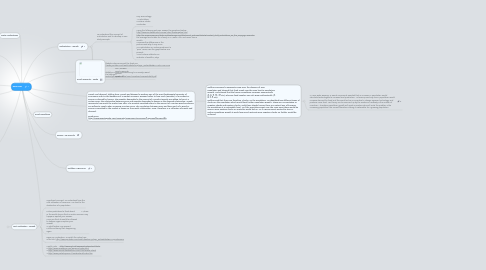Resources
by Sasha Boichuk


1. KEY WORDS: Mega dams Social Economic Environmental Political
2. Water Civilization?
3. Lost Civilization - Zainab
3.1. Significant Concept: To understand how the over utilization of resources can lead to the destruction of a population
3.2. Future pridictions to think about: 1.Where in the world do you think a similar scenario may happen? Explain your answer. 2.Do you think it would be allowed to happen again? Explain your answer. 3.What factors may prevent Malthus's theory from happening again.
3.3. Rapa Nui Civilization: To watch the video here is the link: http://www.youtube.com/watch?feature=player_embedded&v=7PgcNt5NxG4
3.4. Useful Links: 1.http://www.qsl.net/w5www/easterisland.html2. 2.http://www.sergeking.com/Rapanui/index.html 3.http://www.sacred-destinations.com/chile/easter-island 4.http://www.portalrapanui.cl/easterisland/index.htm
4. Mega Dams - Sasha
4.1. KEY QUESTIONS: 1. What is a mega dam? 2. Why are they built? 3. Name a series of dams that are in use in the world today. 4. What are the positive impacts of a dam? 5. What are the negative impacts of a dam?
5. Water Everywhere
5.1. Hydrological Cycle evaporation, condensation, precipitation, infiltration, runoff
5.2. Why have people manipulated different sources of water water? Water is love, Water is life
5.3. What impacts have humans had on water? - Climate change increase, Glaciers melting -
6. Energy/ Emma 1. Why has the overall world consumption of energy increased over the years? 2. Why is the oil becoming more expensive over the years?
7. Malthus expressed a pessimistic view over the dangers of over population and claimed that food supply was the main limit to population growth. He believed that the human population increases exponentially (2, 4, 8, 16, 32 etc), whereas food supplies can only grow arithmetically (2, 4, 6, 8 etc). Malthus said that there are therefore ‘checks’ on the population. He identified two different types of checks on the population which would limit further population growth. These are; preventative or negative checks and positive checks. With these checks he saw them as a natural way of keeping the population at a sustainable level. As if the population went over the crisis point there would be misery; were positive checks on mortality would kick in. As if a government wanted to stop or reduce population growth it would use moral restraint were negative checks on fertility would be enforced.
7.1. In 1965 Ester Boserup, a Danish economist asserted that an increase in population would stimulate technologists to increase food production. As boserup said any rise in population would increase demand for food and this would act as an incentive to change agrarian technology and produce more food. Her theory can be summed up by the sentence ‘necessity is the mother of invention’. Therefore population growth will spark innovators who will sovle the problem s the increasing population has caused therefore making it sustainable for a growing population.
8. hello i am emma
9. Malthus vs Boserup
10. Food Revolution
11. Malnutrition - Zainab
11.1. To understand the concept of malnutrition and to develop a case study example.
11.1.1. Key Terminology: 1.Malnutrition 2.Calorie intake 3.Indicator
11.1.2. Using the following pictures, answer the questions below: http://www.zo.utexas.edu/courses/Thoc/foodsupplies.html http://s3.amazonaws.com/static.restlessbeings.org/attachment_pictures/datas/8/content_child_malnutrition_on_the_map.jpg1.Describe the average food intake for a family in a MEDC, NIC and LEDC over a month. 2.Discuss the differences in the pictures and why it may occur. 3.Is malnutrition or undernourishment a ´poor´ issue? Use the graph below as a prompt. 4.Can calorie intake be an indicator of wealth? Why?
